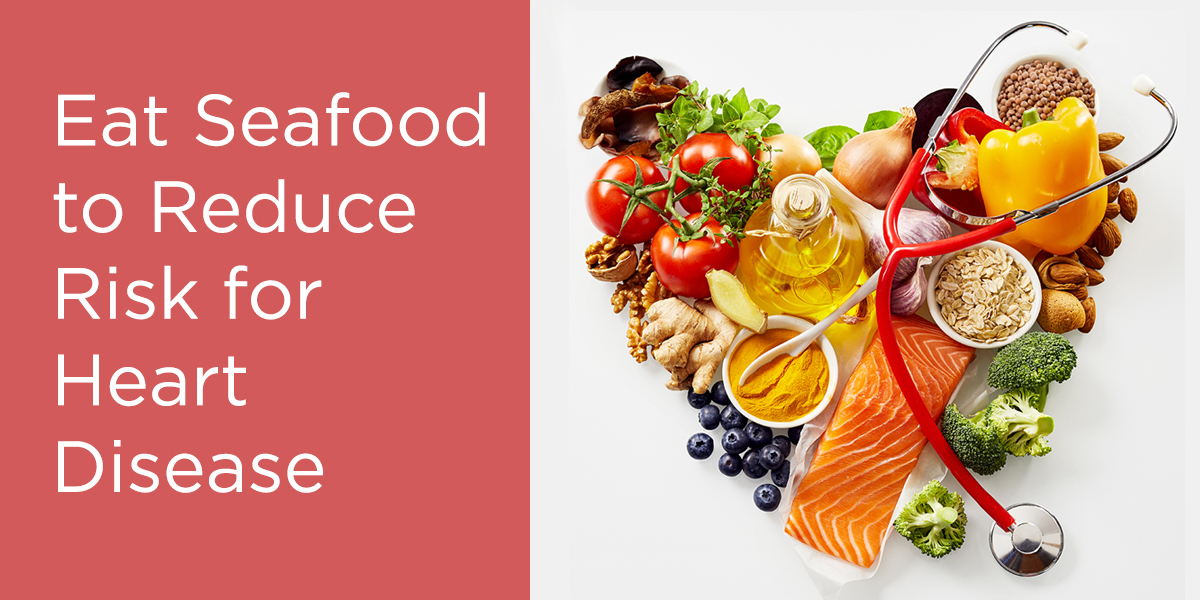Eat Seafood to Improve Your Heart Health
Two recent scientific reports, based on a comprehensive review of published science, recommend that the general population increase the amount of seafood they eat to a minimum of two times per week. Seafood is nutrient-rich, meaning it packs healthy nutrients like omega-3s and protein into less than a couple hundred calories per 4-ounce serving.
Seafood Benefits for Adults
- Reduces Risk for Heart Disease
- Helps Maintain Brain Health
Seafood and Heart Disease
How to Protect Your Heart Health
Heart disease is the number one cause of death in men and women in the U.S., with risk factors including diabetes, high blood cholesterol and being overweight. The good news is that you have the power to help manage these risk factors and lower your risk for heart disease by eating at least two servings of seafood a week. Low consumption of the omega-3 fatty acids found in fish is the second-biggest dietary contributor to preventable deaths in the United States, taking a total of 84,000 lives each year.i In fact, eating seafood just twice a week can reduce the risk of fatal heart attack by 36 percent!ii By eating seafood, you get the essential nutrients that can help protect you against heart attacks, decrease blood triglyceride levels and increase HDL (good) cholesterol.

Did You Know?
Women are particularly at risk for heart disease, with more women dying of heart disease than men each year. In fact, more than 200,000 women die from heart attacks every year—five times the number of women who die from breast cancer.iii
Healthy Suggestions
Besides providing healthy omega-3s, another important nutrient provided by seafood is protein. However, all protein sources aren’t alike. Many high protein foods also happen to have a lot of unhealthy saturated fat and cholesterol. So when choosing which foods to eat, consider a low-calorie option such as tuna. One serving of protein-rich canned or pouch tuna is lower in total fat, saturated fat and cholesterol than an equal serving of beef, pork, chicken or lamb.
iDanaei, Goodarz, et al. “The Preventable Causes of Death in the united states: Comparative risk Assessment of Dietary, Lifestyle, and metabolic risk factors.” Plos medicine 6 (2009).
ii Horn, L. V., PhD, RD., McCoin, M., MPH, RD., Kris-Etherton, P. M., PhD, RD., Burke, F., MS, RD.,Carson, J. A. S., PhD, RD., Champagne, C. M., PhD, RD., Sikand, G., MA, RD. (2008, February). The Evidence for Dietary Prevention and Treatment of Cardiovascular Disease. Journal of the American Dietetic Association, 108(2).
iiiLloyd-Jones D, Adams R, Brown T,. et al. Heart Disease and Stroke Statistics 2010 Update: A Report from the American Heart Association Statistics Committee and Stroke Statistics Subcomittee. Circulation. 2010; 121:e1-e170





